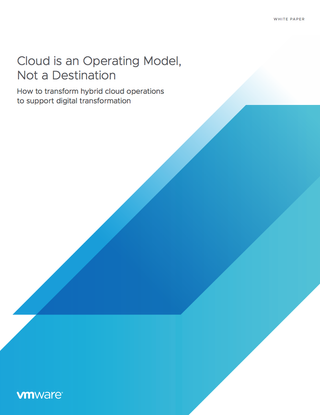The Xbox Series X shows how far the cloud still has to go
All the pre-order palaver makes us wonder: Just how elastic is the cloud, anyway?

Watching the mad scramble to secure an Xbox Series X this week has been grimly amusing. As is normally the case whenever a new big-ticket gaming item comes out, there was a frantic dash to pre-order the new console in order to guarantee a day-one delivery and – as usual – the process was a complete mess.
Predictably, the demand massively outstripped available supply and retailers quickly ran out of stock, but that process wasn’t helped by a truly staggering amount of technical failures. Customers on both sides of the Atlantic were forced to suffer long load times when trying to access store pages, only to be greeted with error messages.
Sony suffered similar problems with the PlayStation 5’s launch; part of the problem was low stock levels and a lack of coordination around when pre-orders were going live, but many attempted purchases were stymied by technical errors, failed payments and other wobbles.
Naturally, this wasn’t a problem for me; as a newly-minted PC gamer, I merely sat on my watercooled throne of RTX 2080’s and observed the carnage with amused disinterest. It did, however, get me thinking about just how infinitely scalable the cloud actually is.
One thing I found particularly interesting is that many users reported multiple problems when trying to purchase the new Xbox through both Amazon and Microsoft’s storefronts. It’s perhaps understandable that smaller retailers like Argos and Very might have problems in the face of an overwhelming surge of app and website traffic, but Amazon and Microsoft are the proprietors of the world’s two biggest public cloud infrastructures.
One of the key selling-points of the cloud – or so we’re told – is that it’s an ‘elastic’ infrastructure, meaning that when site traffic surges, the system can scale up its capacity to accommodate it rather than simply falling over as traditional on-premise infrastructure would. And yet, when traffic to their platforms spiked, neither Microsoft nor Amazon seemed able to cope without issue.
Now, of course, I understand why this happened: The latest Xbox is one of the most compelling consoles Microsoft has released in years, and demand for pre-orders was no doubt especially high. On top of that, computer science is, in many ways, more art than science – if cloud computing wasn’t so tricky to get right, Microsoft wouldn’t have been able to earn $12.5 billion from doing so in its latest financial quarter.
Get the ITPro. daily newsletter
Receive our latest news, industry updates, featured resources and more. Sign up today to receive our FREE report on AI cyber crime & security - newly updated for 2024.

Cloud is an operating model, not a destination
How to transform hybrid cloud operations to support digital transformation
However, it must be said that when not even the two titans of the cloud computing space can handle the traffic for a scheduled and anticipated launch event –which was for one of Microsoft’s own flagship products, to boot – it doesn’t inspire the greatest confidence in AWS or Azure’s ability to weather the unexpected spikes in the way its customers likely expect.
Both cloud platforms are still technical marvels on the cutting edge of enterprise computing, and one wobbly launch does not a faulty platform make. Still though, it’s a useful reminder that for all the cloud industry’s bluster about ‘maximum uptime’ and ‘infinite scalability’, there’s no such thing as an infallible system, and even the biggest platforms aren’t immune to the occasional upset.
Adam Shepherd has been a technology journalist since 2015, covering everything from cloud storage and security, to smartphones and servers. Over the course of his career, he’s seen the spread of 5G, the growing ubiquity of wireless devices, and the start of the connected revolution. He’s also been to more trade shows and technology conferences than he cares to count.
Adam is an avid follower of the latest hardware innovations, and he is never happier than when tinkering with complex network configurations, or exploring a new Linux distro. He was also previously a co-host on the ITPro Podcast, where he was often found ranting about his love of strange gadgets, his disdain for Windows Mobile, and everything in between.
You can find Adam tweeting about enterprise technology (or more often bad jokes) @AdamShepherUK.





